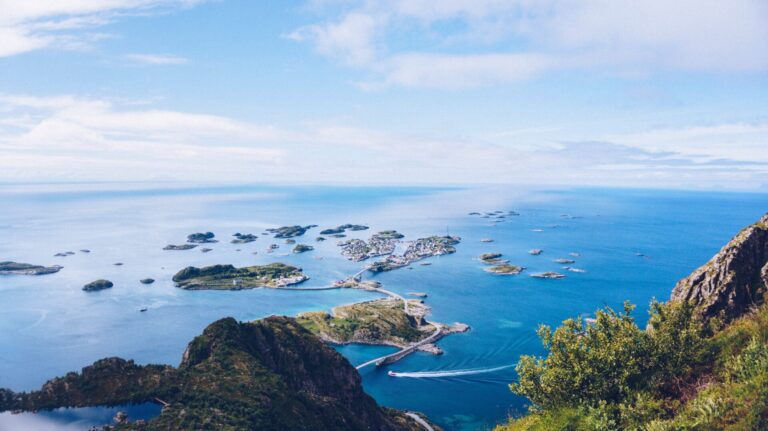Project background
The Trøndelag and Nordland coasts lack efficient renewable energy infrastructure. Previous projects have concluded that there is a strong need for updated and comprehensive mapping of energy consumption in the aquaculture industry to enable a more effective energy infrastructure.
The maritime sector is undergoing rapid transformation, and both policymakers and the industry itself are strongly committed to transitioning to renewable energy sources. For aquaculture, this includes not only vessels but also renewable energy access for feed barges, hatcheries, processing plants, and the wider value chain. There is also a growing demand for renewable energy in ports, both for shore power and, increasingly, vessel charging.
In Trøndelag and Nordland, the main power lines are located inland, while the aquaculture industry and related maritime sector along the coast face increasing challenges in accessing renewable power. At the same time, the development of new renewable energy sources is progressing rapidly, and future access to efficient energy infrastructure adapted to these new sources is essential for the transition.
To move forward, it is crucial to provide a sound basis for decision-making for both businesses and public authorities in the counties of Trøndelag and Nordland. This foundation will also be important in the continued development of energy infrastructure along the coastal regions of Trøndelag and Nordland.
Reference group: SinkabergHansen, MOWI, Lerøy Seafood, Frøy, Linea, and Tensio.
Project goals
Long-term goal:
To develop and implement efficient renewable energy supply for battery- and hydrogen-electric vessels, industry, and aquaculture facilities on land and at sea in Trøndelag and Nordland.
Goals for project phases 1 and 2:
-
Map operational patterns for different vessel types
-
Map quays, ports, and land bases with regard to availability and use
-
Map processing plants, hatcheries, land-based and sea-based aquaculture facilities
-
Map grid, energy, and capacity access
-
Analyze and compile data (including assessing opportunities for changes with stakeholders based on the findings)
-
Develop a decision-making framework highlighting challenges and opportunities for energy access to land-based and sea-based facilities, as well as energy supply for fully and partially electrified vessels, their ports, and land bases. This covers both existing and future facilities, as well as the energy demand of a future fully electrified vessel fleet.
Together, these activities will provide a foundation for developing new energy infrastructure along the coast of Trøndelag and Nordland (limited to Trøndelag and Nordland, Production Area 8).
Rapporter
- Delrapport hovedprosjekt Energi i havbruk: Optimal energibruk på oppdrettsanlegg
- Sluttrapport: Forprosjekt Energi i havbruk
- Sluttrapport Energi i havbruk: Hovedprosjekt Energi i havbruk
Oppgaver
- Masteroppgave Sofie Møller: Reduction of CO2 Emissions in the Salmon Farming Industry: The Potential for Energy Efficiency Measures and Electrification
- Masteroppgave Sofie Helene Næss Jebsen: Scenarios for the Decarbonization of Energy Supply for Salmon Aquaculture in Norway
Media
- Energikartlegging Trøndelag og Nordland: – Helt avgjørende for energiomstillingen langs kysten.
- Energikartlegging Trøndelag og Nordland: Skal kartlegge energibehovet langs kysten.
- Energi i Havbruk – Kronikk: Slik kan vi få ren energi til fremtidens oppdrett.
- Energi i Havbruk – Kronikk: Sjømat og hvabruksteknologi kan bli Norges bidrag til klimavennlig eksport.
- Energi i Havbruk – Kronoikk: Samarbeid er nøkkelen til å få ned utslippene.
